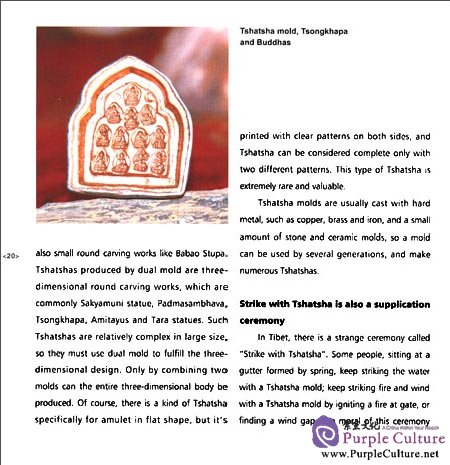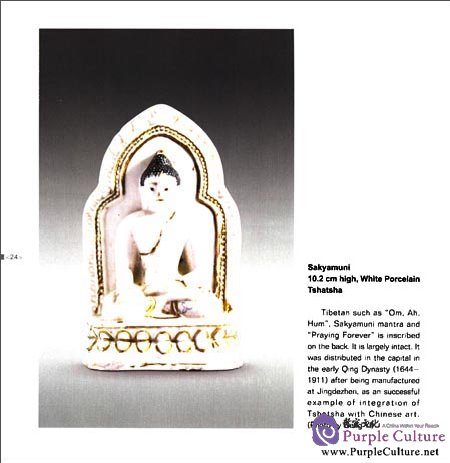Sample Pages Preview


With the development of buddhist culture, the image of Tshatsha was enriched, including gods, Buddhas, Bodhisattvas, Yidams, Dharmapalas, etc. Tshatsha function was greatly expanded and the original monotonous content varied gradually to form a unique miniature world of deities.
At the crossing of Tibetan holy mountains and lakes, there are many dedicated maisonettes built to store Tshatshas, usually about one person high, called the Tshatsha Temple. After a temple is filled with Tshatshas, enclose it with walls,and leave only a small opening, in order to let circumanbulators add new Tshatshaw, which may reach tens of thousands in number over time. Tibetans believe that a turn around such a temple, is equivalent to numerous ceremonies to Buddhas and Bodhisattvas, and countless chanting, to reduce their sins and increase reward.
Production Process
During the production of Tshatsha, first sprinkle highland barley on a smooth panel, divide clay into several small groups to attach to them-barley on the back must be in an odd number, because Tibetans believe that an odd number isauspicious, some people put some scripture text, clothes, hair or other prayer materials into them Brush the mold with a little oil for better smooth, then put the mold onto the clay, knock the copper mold with a thick stick, and open it carefully.
The newly demolded tshatshas need to be dried in the shade, because sunshine will make them crack. They may be burned to the quality of brick, or even colored and glazed. When Tshatshas are accumulated to a certain number, invite monks for chanting and consecration, and then put into Tshatsha Temple for best wishes.

